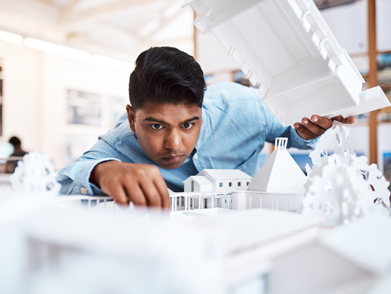Industrial Design Trends
- Home
- Industrial Design Trends

- June 28, 2023
- by Kristine T.
- Design Strategy
In the fast-paced world of industrial design, staying updated with the latest trends is crucial to creating innovative and successful products. As technology continues to advance and consumer preferences evolve, it's essential for designers to adapt and embrace new ideas. In this article, we will explore some of the prominent industrial design trends that are shaping the industry today.
Sustainability and Eco-Friendly Design
With increasing awareness of environmental issues, sustainability has become a significant consideration in industrial design. Consumers now expect products to be eco-friendly and made from recycled or renewable materials. Designers are incorporating sustainable practices into their work by reducing waste, using energy-efficient manufacturing processes, and designing products that are easily recyclable. By embracing sustainability, companies can not only reduce their environmental footprint but also appeal to conscious consumers who prioritize eco-friendly choices.
Minimalism and Simplicity
The minimalist design approach has gained significant popularity in recent years. The idea of "less is more" is being applied to industrial design, where clean lines, simple forms, and clutter-free aesthetics are preferred. Minimalist designs not only offer a sleek and timeless appeal but also emphasize functionality and ease of use. By eliminating unnecessary elements and focusing on essential features, designers can create products that are visually appealing and user-friendly.


Human-Centered Design
Human-centered design puts the user at the center of the design process. Designers now focus on understanding user needs, behaviors, and preferences to create products that provide a seamless and enjoyable experience. By conducting user research, usability testing, and prototyping, designers can gather valuable insights and iteratively improve their designs. Human-centered design ensures that products are intuitive, ergonomic, and tailored to meet the specific requirements of the target audience.
Smart and Connected Products
The rise of the Internet of Things (IoT) has paved the way for smart and connected products. Industrial designers are now integrating technology into their designs, enabling products to connect and communicate with other devices. From smart home appliances to wearable technology, the possibilities are endless. By incorporating sensors, connectivity, and data analysis capabilities, designers can create products that offer enhanced functionality and seamless integration with the digital world.
Emotional Design
Emotional design focuses on creating products that evoke positive emotions and establish a connection with users. Designers aim to create products that are not only visually appealing but also elicit joy, satisfaction, or a sense of delight. By considering the sensory aspects, aesthetics, and user experience, designers can craft products that leave a lasting impression on users. Emotional design can help build brand loyalty and create memorable experiences, setting products apart from their competitors.



